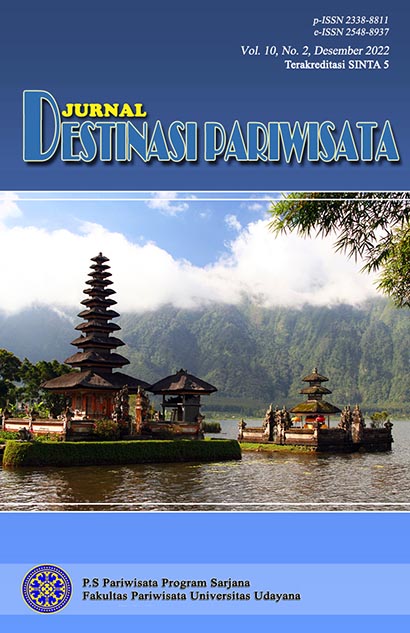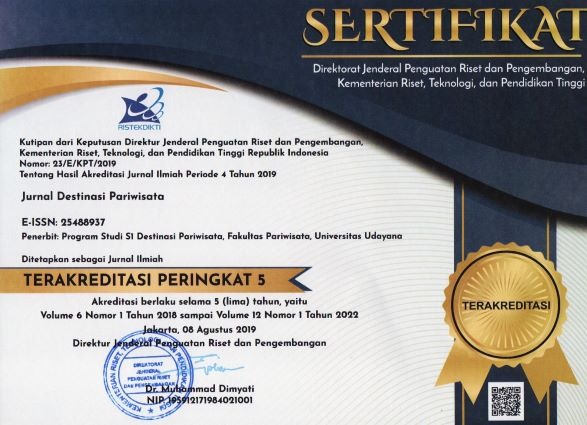Upaya Peningkatan Kunjungan Wisatawan Wellness Tourism di Desa Adat Bindu, Kabupaten Badung, Bali
Abstract
Bindu Traditional Village (Desa Adat Bindu) is an emerging health and wellness tourism destination in Bali
that features a variety of spiritual activities and traditional herbs and seasonings. Unfortunately, as a result of a
dearth of marketing and the COVID-19 restrictions, the number of tourists visiting the area dropped to as low as zero
in 2020. This issued has raised some concerns regarding resilience, necessitating the identification of Bindu Village’s
wellness tourism product, its visitors’ characteristics, and the efforts of stakeholders to increase visitor numbers.
This research employs a qualitative methodology, gathering data through interviews, observations,
documentation, and a review of the relevant literature. To obtain primary data, interviews with the head of Bindu
Village and the head of Bindu’s POKDARWIS Group were conducted. The data are analyzed using the SWOT (Strength,
Weakness, Opportunities, and Threats) framework to structure a promotion strategy.
This research revealed that Bindu Traditional Village’s tourism products are comprehensive, encompassing,
attraction, amenity, accessibility, and ancillary products. Middle-to-upper class travelers, both international and
local, dominated the village. To increase the number of visitors, stakeholders must use social media to promote a
healthy, clean, and content lifestyle that is sustained by wellness tourism. This research also suggests collaboration
as a promotional strategy.
Keyword: Wellness tourism, Strategy, Bindu Traditional Village, SWOT, Tourism Recovery.
Downloads









